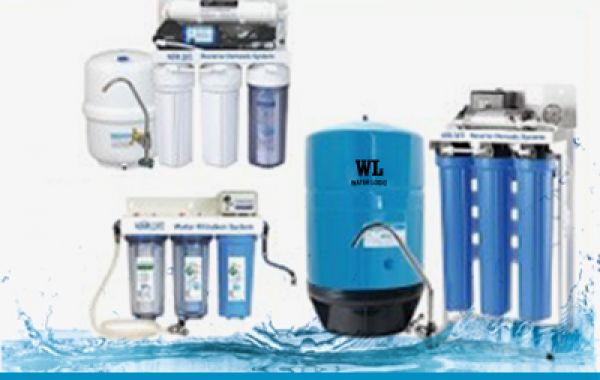Reverse osmosis is a water purification technology that passes water through a very thin membrane to remove various impurities that are invisible to the naked eye.
The filtration stage up to the RO usually consists of a sediment filter and a carbon filter.
Sediment filter (SF) - Sediment filters remove suspended particles such as dirt, dust, sand and rust from the water source. It removes fine and coarse particles and extends the life of the carbon filter.
Activated carbon filter - Dissolved chlorine, oil, color and odor are removed by the activated carbon filter, which is the second stage of the filtration process. The filter also removes organic contaminants such as harmful pesticides. It also absorbs organic compounds that cause bad taste and odor from the water.
"Water Logic water purifiers also include a mesh filter, which acts as an additional purification step before the water enters the RO membrane. This filter ensures that any remaining particulate contaminants are removed.
The heart of the RO water purifier is the RO membrane.
RO membrane - After the above-mentioned pre-filtration steps, the water is pumped through the RO membrane. The RO membrane is a thin, semi-permeable membrane with very small pores. Due to the small size of the RO membrane, only purified water passes through it and all impurities are removed.
A pump compresses the water to create the pressure needed to filter the water through the RO membrane. Due to the high-water pressure, only purified water passes through the membrane, while dissolved salts, heavy metals, chemicals, pesticides and microbial contaminants remain on the surface of the membrane.
The RO water purifier is particularly recommended for use in households with high TDS levels (more than 300 ppm), as it removes the hardness of the water and makes it fit for consumption. It is the most effective water purification technology for removing heavy metals and chemicals such as lead, mercury, arsenic, chlorine, fluoride and others. It also removes microbial contaminants such as bacteria, viruses, protozoa and cysts to ensure safe drinking water. Find out more about its benefits here.
The post-RO filtration stage consists of a UV filter (for RO+UV water purifier) and a carbon filter after the RO.
UV filter - The UV filter provides an additional layer of purification after the filtered water has passed through the RO membrane. UV filtration inactivates any micro-organisms such as bacteria, viruses and parasites that remain after reverse osmosis filtration.
The carbon filter after the RO is usually the last stage of purification. It acts as a final filter, a polishing agent and improves the taste of the purified water.
"Water Logic water purifiers also feature a microfiltration membrane, which is placed underneath the RO and the UV stage, ensuring that the water is purified three times instead of once.
All of these stages combine to form Water Logic's advanced 7-stage RO+UV+MF purification, which ensures that your drinking water is 100% safe and free from contaminants.
In addition, our water purifiers enrich the RO purified water with important minerals such as calcium and magnesium.
We hope this article has given you an insight into how an RO water purifier works. This should help you make an informed decision when choosing the best RO water purifier for your home.








